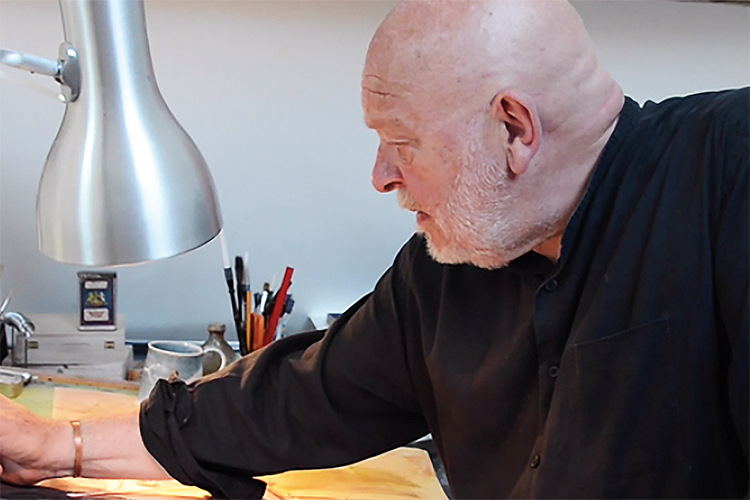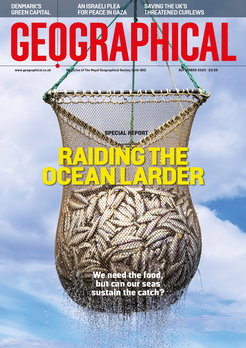
Artist and traveller David Pollock talks about taking a slow approach to travelling and shares his top tips
David’s Travel Insights
• Go slow – take your time to absorb detail and explore
• Build relationships, however slight, with those you meet
• Take a sketchbook as well as a camera
Just like the giant tortoises painted in his sketchbook, David Pollock takes a slow approach to travel. He likes to make time to stop and really look at the places he visits, to take in all the details of the sights and sounds that surround him. ‘It’s not just while travelling – I’ve done that my whole life,’ he says. Giant tortoises, as well as sea lions, Sally Lightfoot crabs and blue-footed boobies are just some of the Galápagos species that will feature in his new book, Galápagos Sketchbook, published this coming September. The A5 book, which will be printed on textured paper and filled with watercolour illustrations and sketches, is a replica of the sketchbooks he has carried with him everywhere for the past three decades.
As an artist, taking the time to observe his surroundings is something that comes naturally, but Pollock says that any traveller can learn to slow down and explore. It has helped him to build relationships with the people he meets, who are often curious about the man they see sitting quietly and sketching. ‘It invariably starts with children, then adults, who come up to have a look at what you are doing,’ he says. ‘I’ve been brought lots of cups of tea by people over the years. It’s helped me to connect, at least to a certain extent, with local people and cultures.’ The antithesis of a whistle-stop multi-country tour, slow travel is best done infrequently for longer stays. Sometimes, that’s not possible, but Pollock suggests making the most of every available moment, no matter how small; he’s often found the time to sketch between meetings or while waiting for a flight. He travels equipped with a box of watercolours – the colours sometimes selected to suit the destination – and a couple of brushes and pens.

Looking back over his pictures, Pollock says that he can nearly always remember the temperature, the smells and the atmosphere of a place. ‘I find it’s not the same when I take a photograph,’ he says. Although he prefers to draw from life, it can sometimes be a challenge, especially when his subject is on the move. ‘You’d be surprised, even a giant tortoise can move quickly when you’re trying to draw it,’ he says. Fortunately, during his stay in the Galápagos islands he didn’t have to go far for inspiration. ‘Normally, when I’m looking for an animal or bird, I’m in a ditch somewhere, looking through the rain with a pair of binoculars. Whereas in the Galápagos, they are practically inviting you into their sitting rooms and you can sit down within three or four feet of them.
It’s a great privilege to be able to observe all these wonderful creatures closely,’ he adds. Pollock thinks that anyone who wants to should have a go at sketching. After all, he says, it doesn’t cost a lot to try. He offers a few tips: carry a good-quality hardback sketchbook, but not a ring-bound book – it’s important to keep both the successes and the failures; don’t eschew photographs – they are good sources of reference – but equally don’t be a slave to copying them; make a habit of drawing en plein air from the subject whenever you can. ‘A sketchbook is a means of making a personal record unlike any other; it makes you stop and focus and really think about what you’re looking at,’ he says. ‘I think it can enhance anybody’s experience of travel.’




